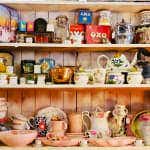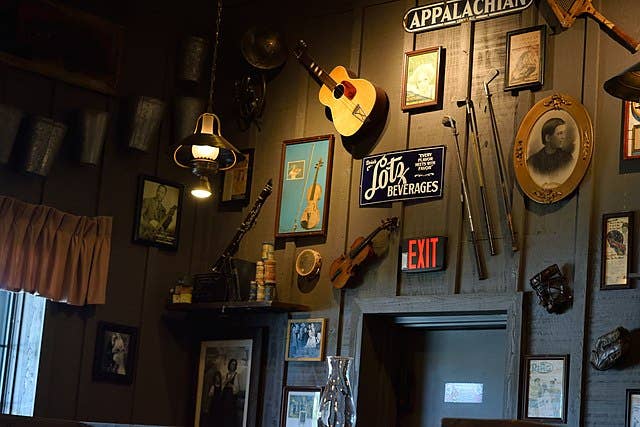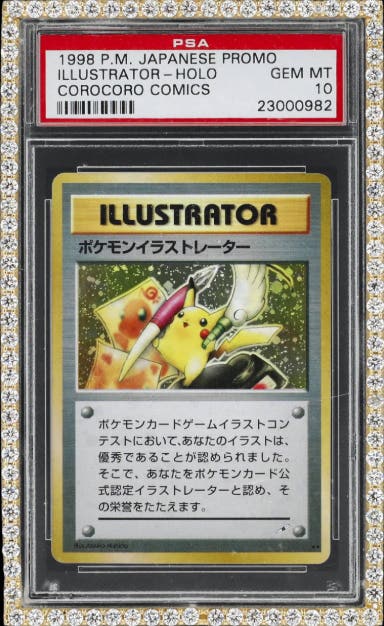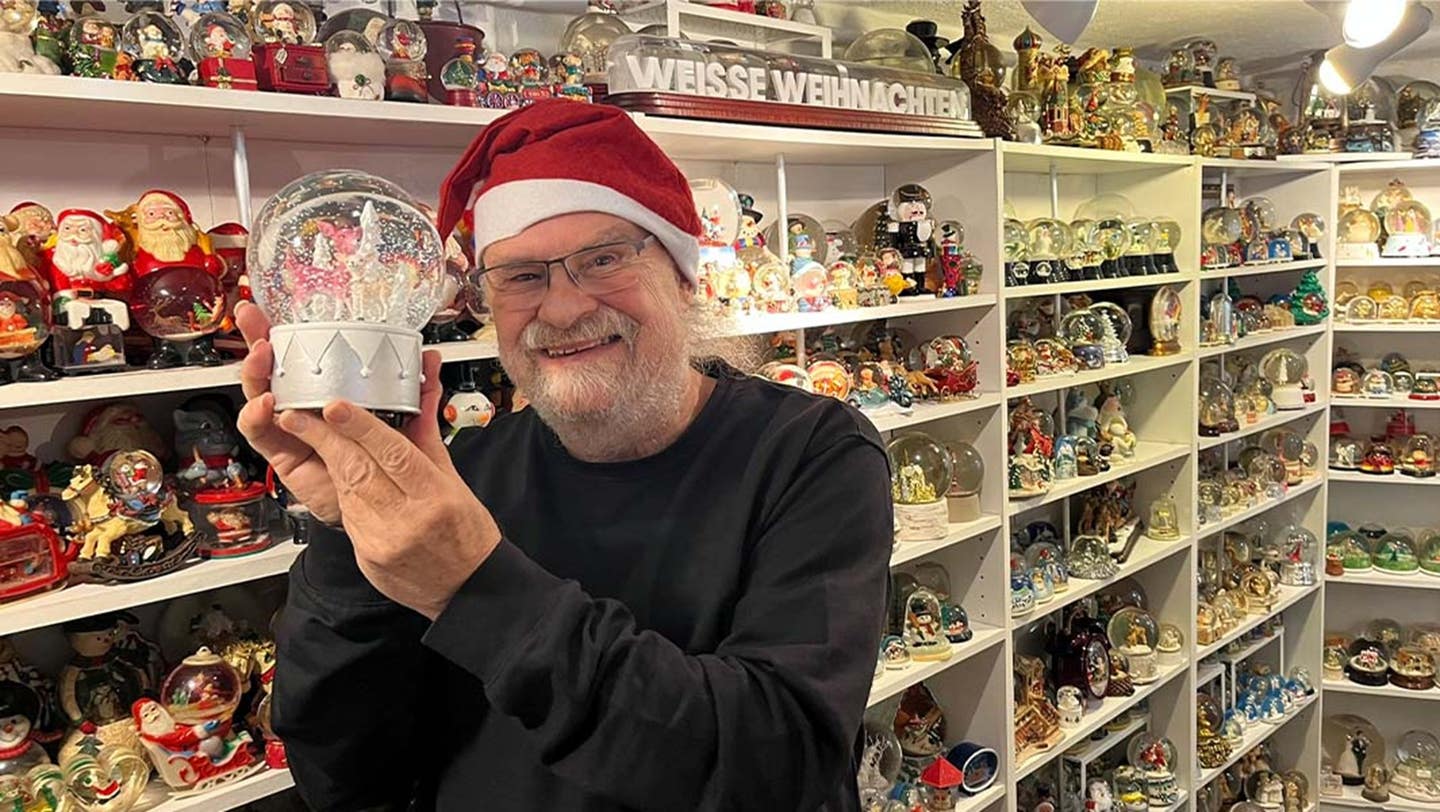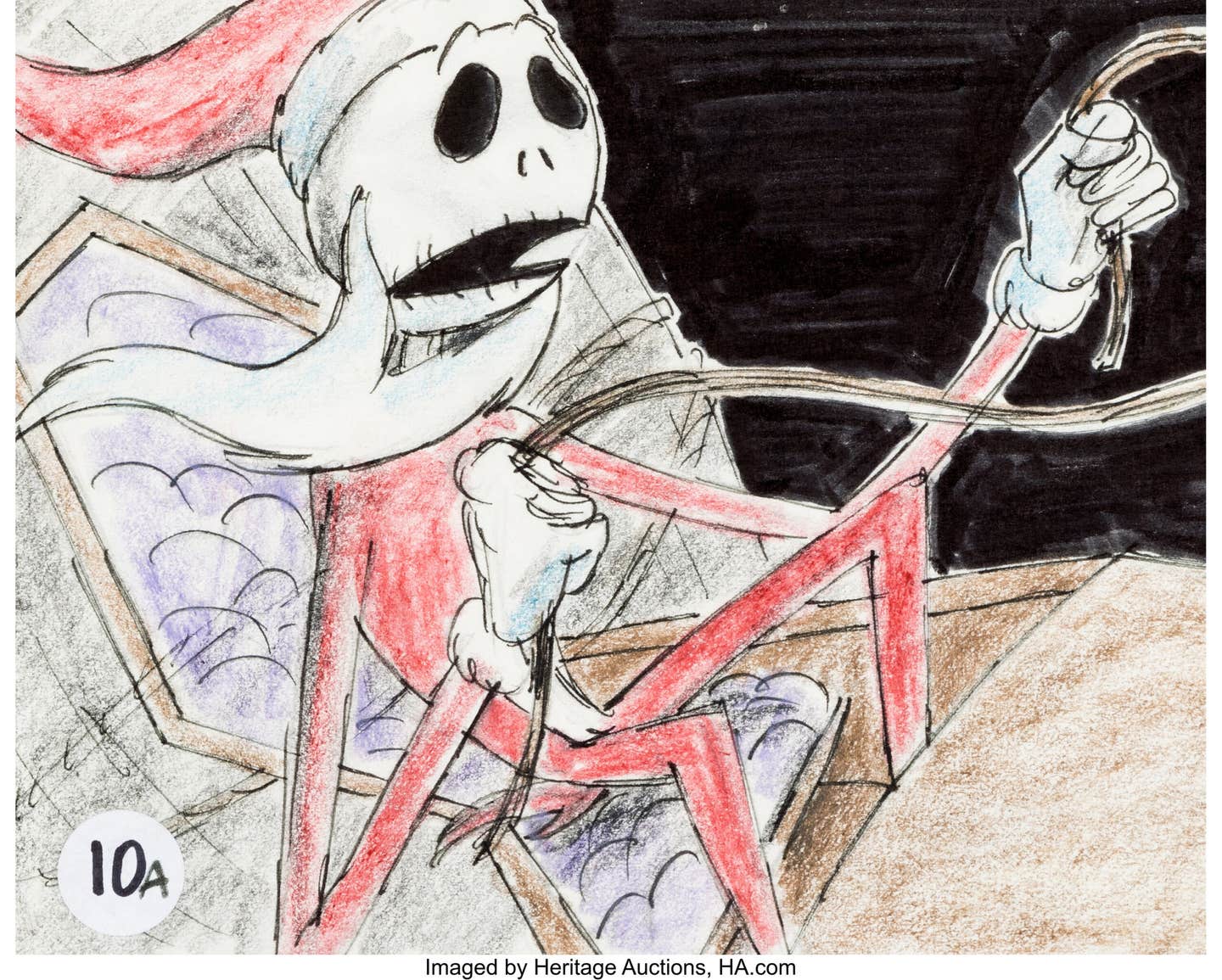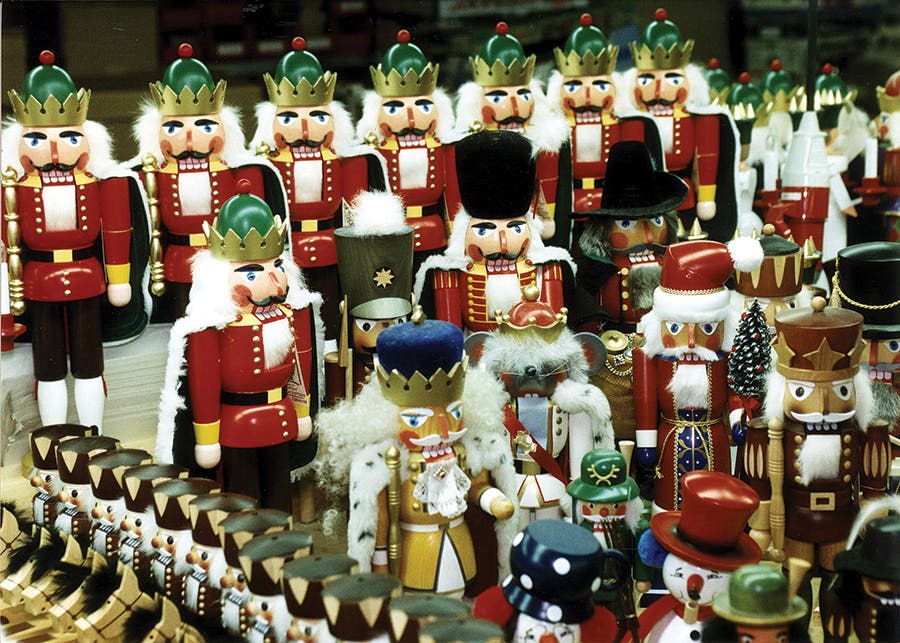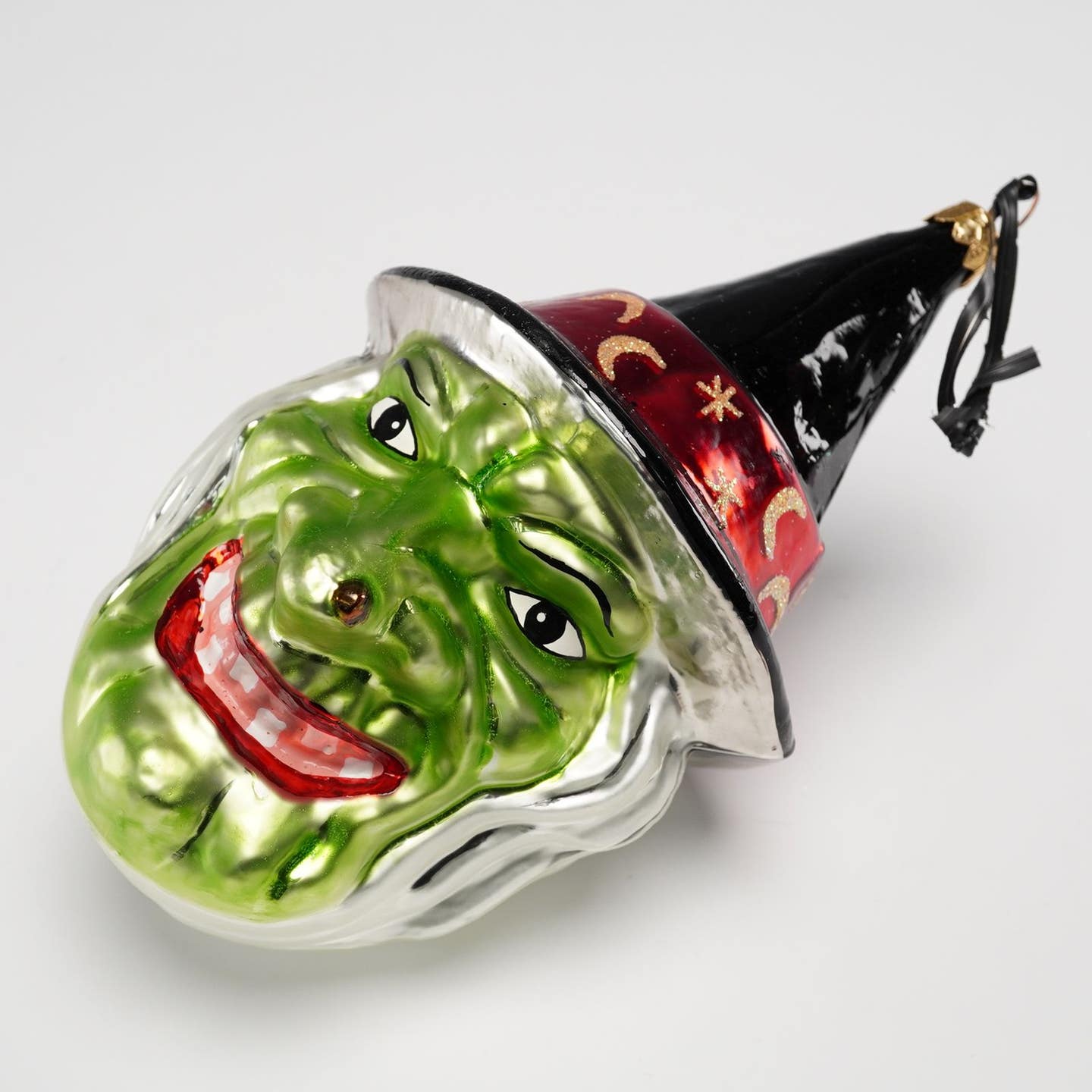Oyster Plates: Elegant Beauties on the Half-Shell.
The Victorians were masters at weaving function with fashionable form—even if it was for serving something like slimy mollusks.
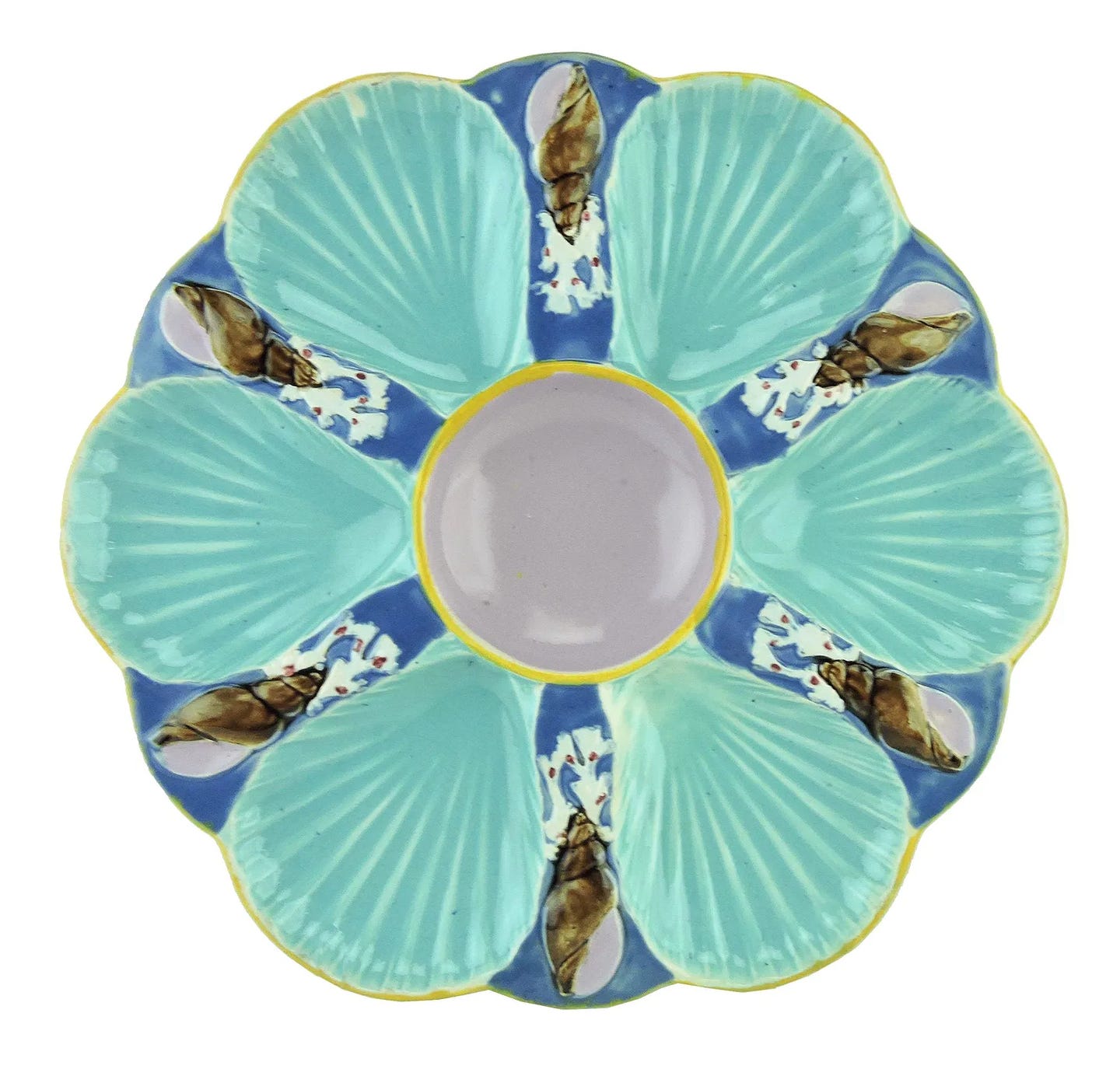
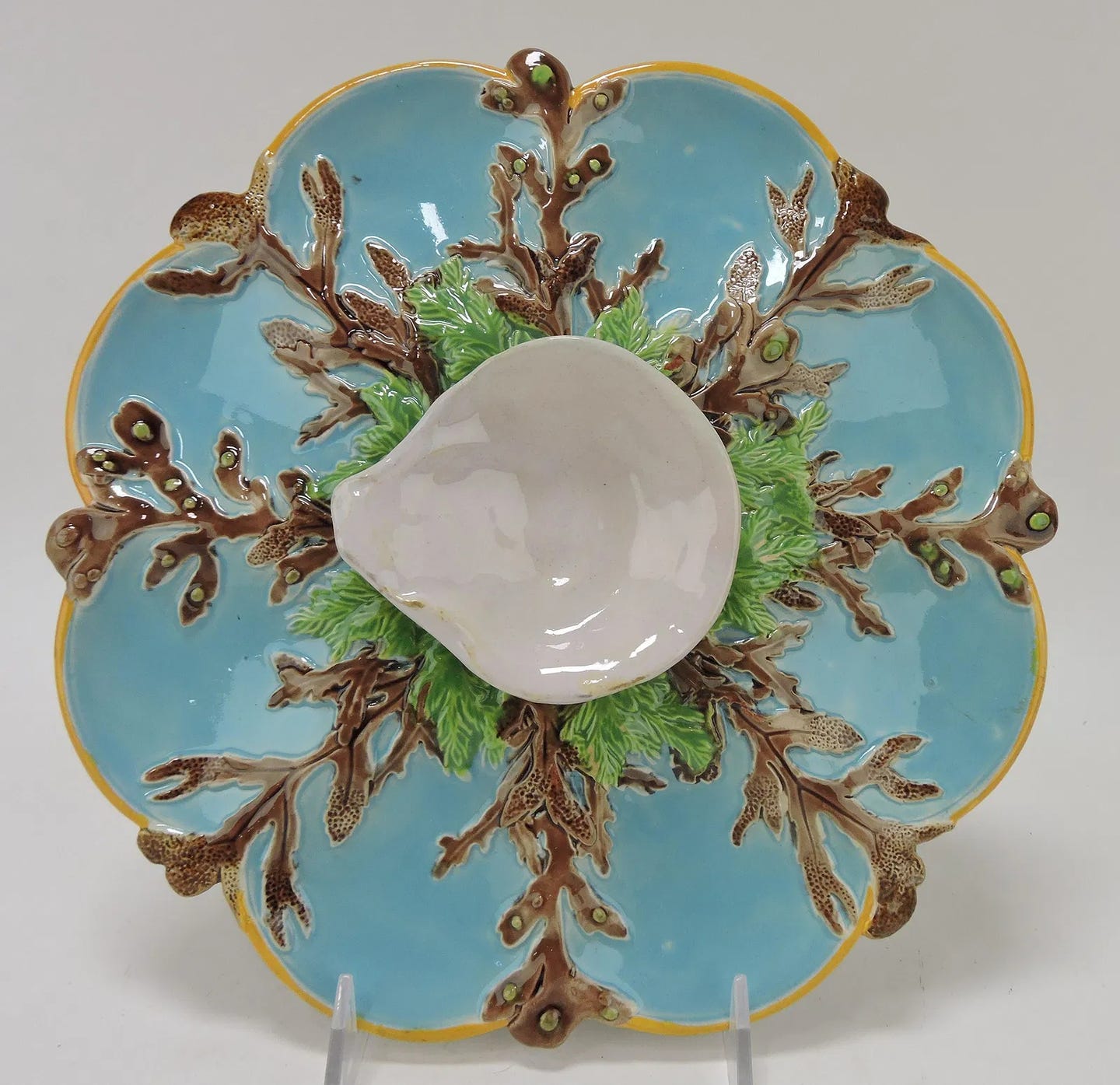
With dining elevated to high art during the 19th century, people loved showing off their wealth with sophisticated table settings, including elaborate dinnerware and serving pieces specially designed for specific foods. Considered a delicacy, oysters naturally had their own specialized plates.
Decorative oyster plates added beauty to tables then and are now actively pursued by collectors more than a century later as small works of art, with some pieces worth thousands of dollars.
Served in Style
Initially a staple for the poor and working class, oysters were cheap and plentiful everywhere in the 19th century. As consumption grew, however, populations declined, and the mollusks became an expensive luxury affordable only to the social elite. Victorian hostesses delighted in serving them on ornately designed and organically shaped plates.
Oysters were also popular in America, especially with the wealthy on both coasts. They served them on beautifully gilded plates to their guests at lavish dinner parties and other grand fetes.
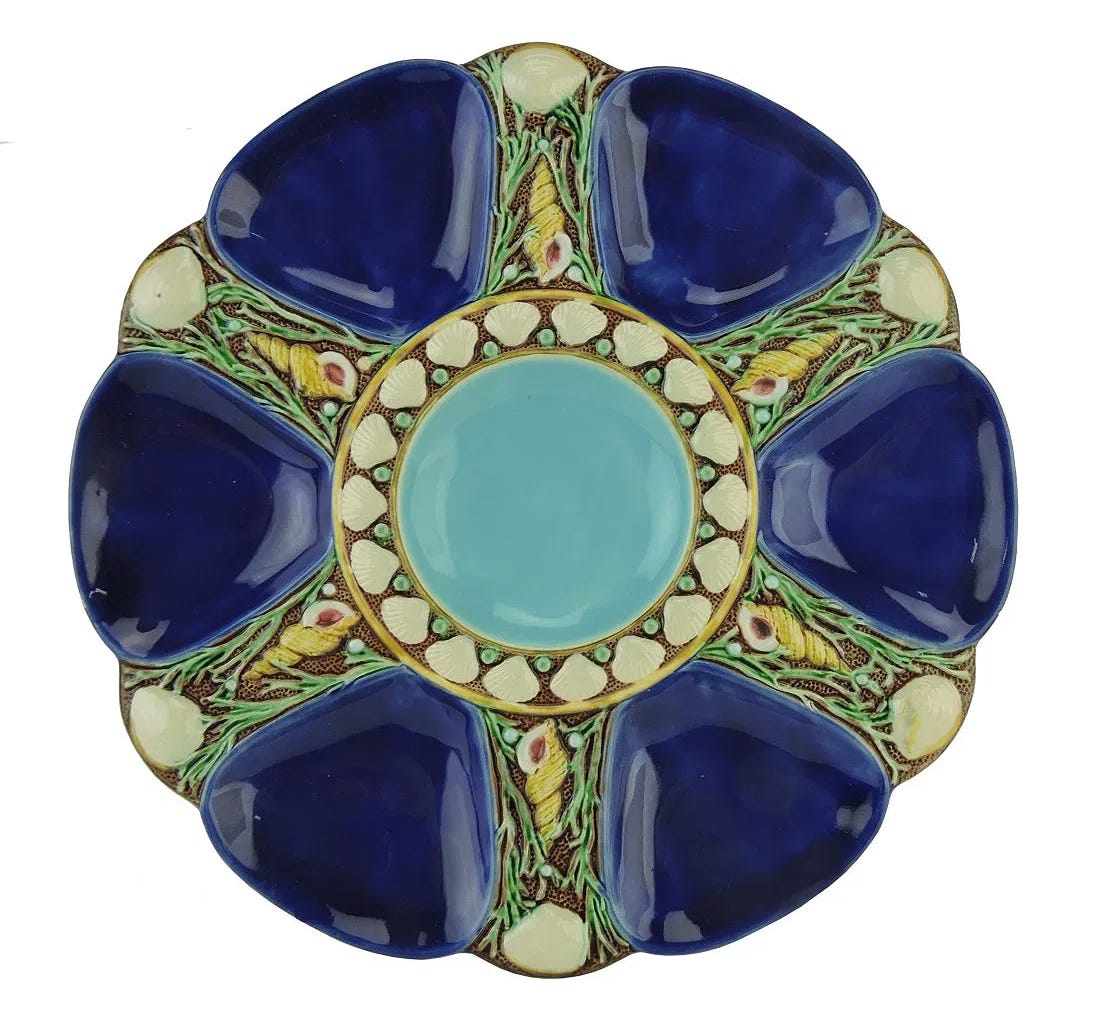
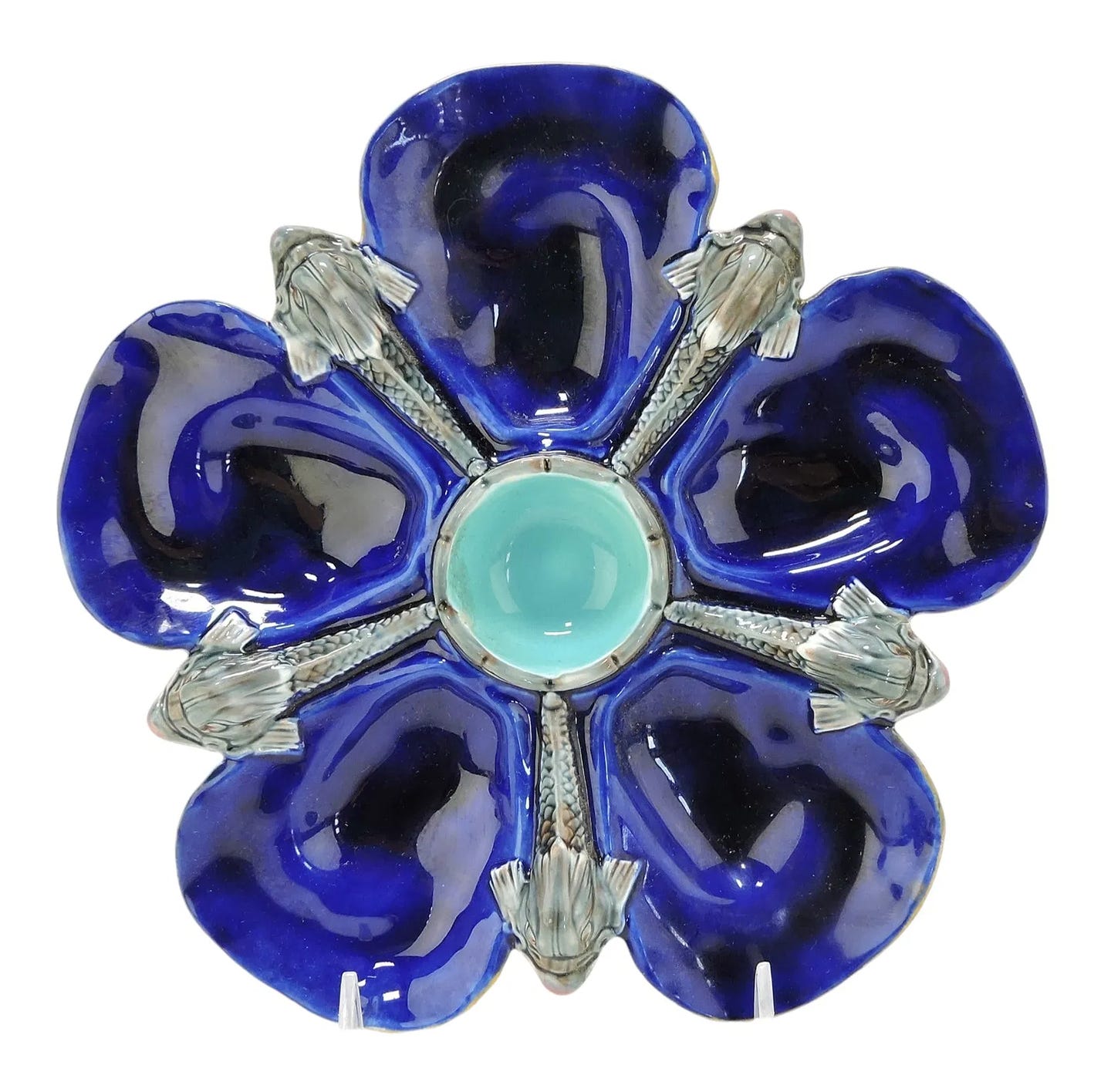
U.S. President Rutherford B. Hayes also commissioned them for important dinners and other special events when he was in office from 1877 to 1881. The design of Hayes’ oyster plates was later sold commercially and became all the rage. Many of these sets still exist on the secondary market today and are avidly sought by collectors.
Types and Makers
As demand increased for these fancy pieces, porcelain companies in America and overseas were happy to oblige, producing oyster plates in various forms. There were plates with shallow wells for serving shucked oysters, plates with deeper indentations for serving them on the half-shell with some shaved ice, and plates for serving oysters on the half-shell without ice. Shallow plates were generally preferred, as the oyster shells’ rough edges could easily damage the other types.
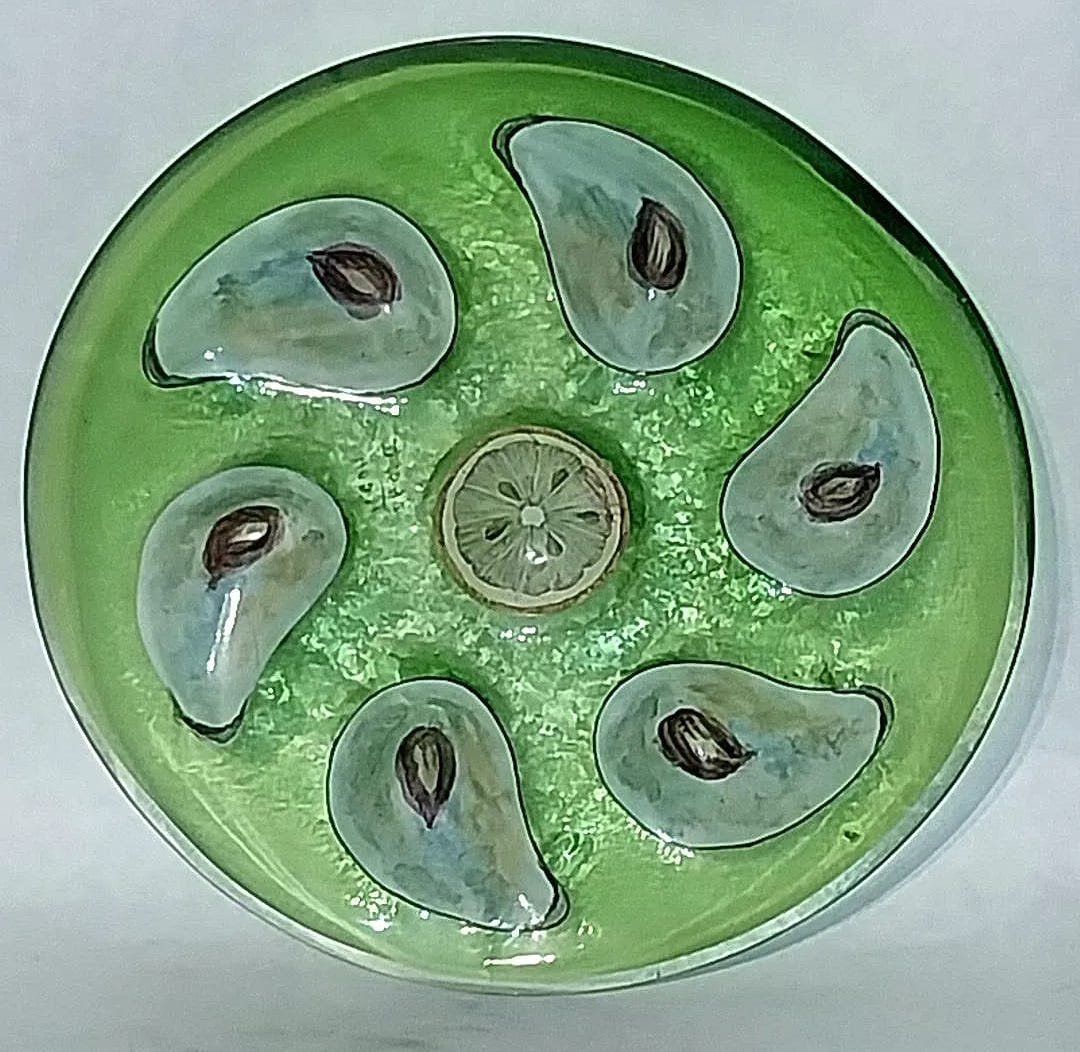
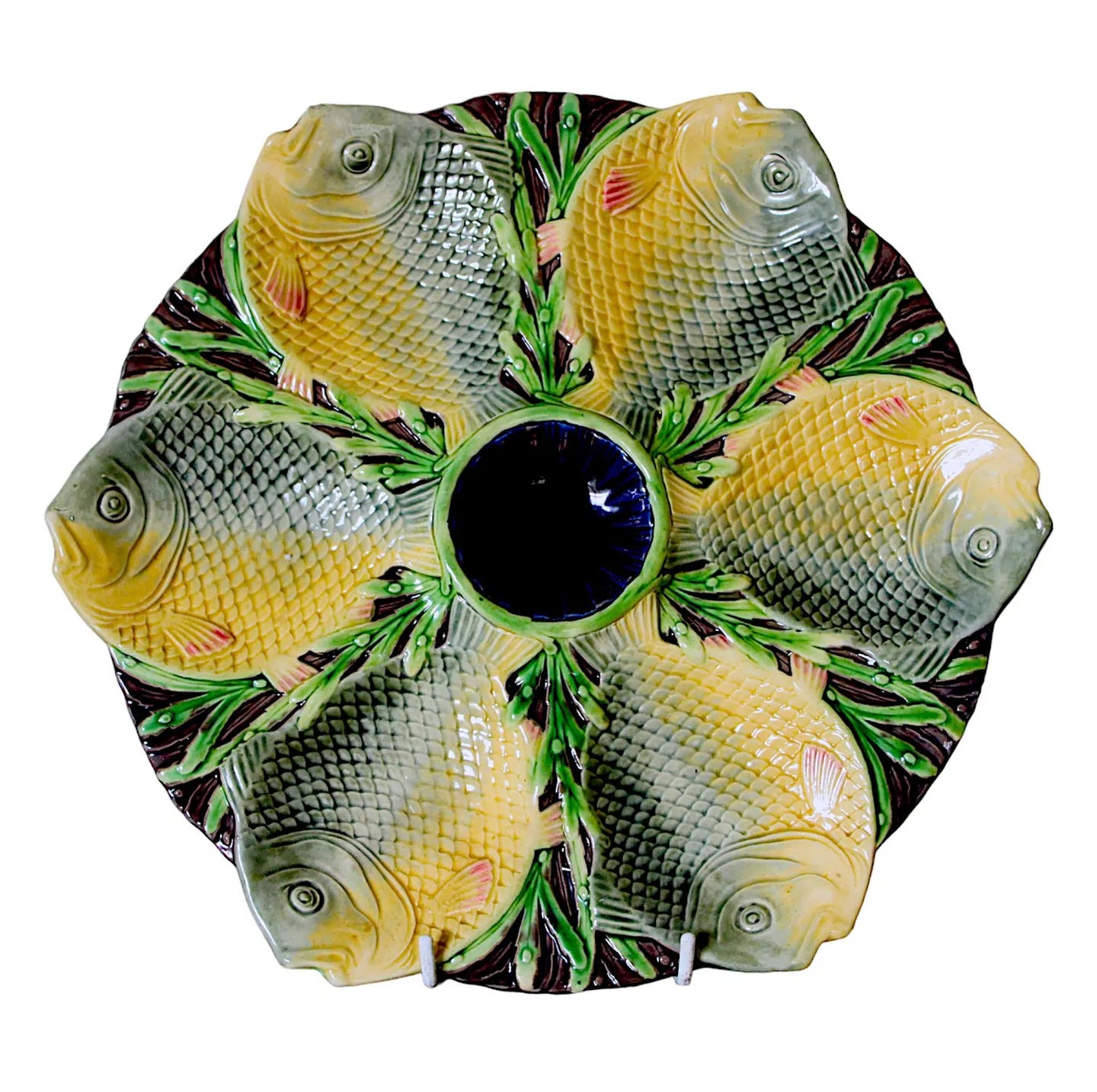
11” diameter, shape No. 2366. It sold for $1,400 in 2024.
Image courtesy Strawser Auction Group by LiveAuctioneers.
Oyster plates were designed in three main shapes:
• Geometric: The geometric shape usually consists of six uniform wells with a smaller one in the center for an accompanying sauce or lemon slices.
• Kidney: These have five wells, and the silhouette looks like its namesake.
• Turkey: This shape has five wells, and their positioning on the plate resembles the outline of a turkey.
Though some plates were made of glass and silver, most were porcelain and pottery. Some of the renowned manufacturers of oyster plates during their prime were Union Porcelain Works in the U.S., Minton and Wedgwood in England, Haviland in France, and Belleek in Ireland.
Overharvesting oysters after World War I led to a decline in population and consumption; hence, the need for oyster plates also dwindled, especially as less formal dining trends became fashionable. Today, however, these elegant beauties are prized treasures.
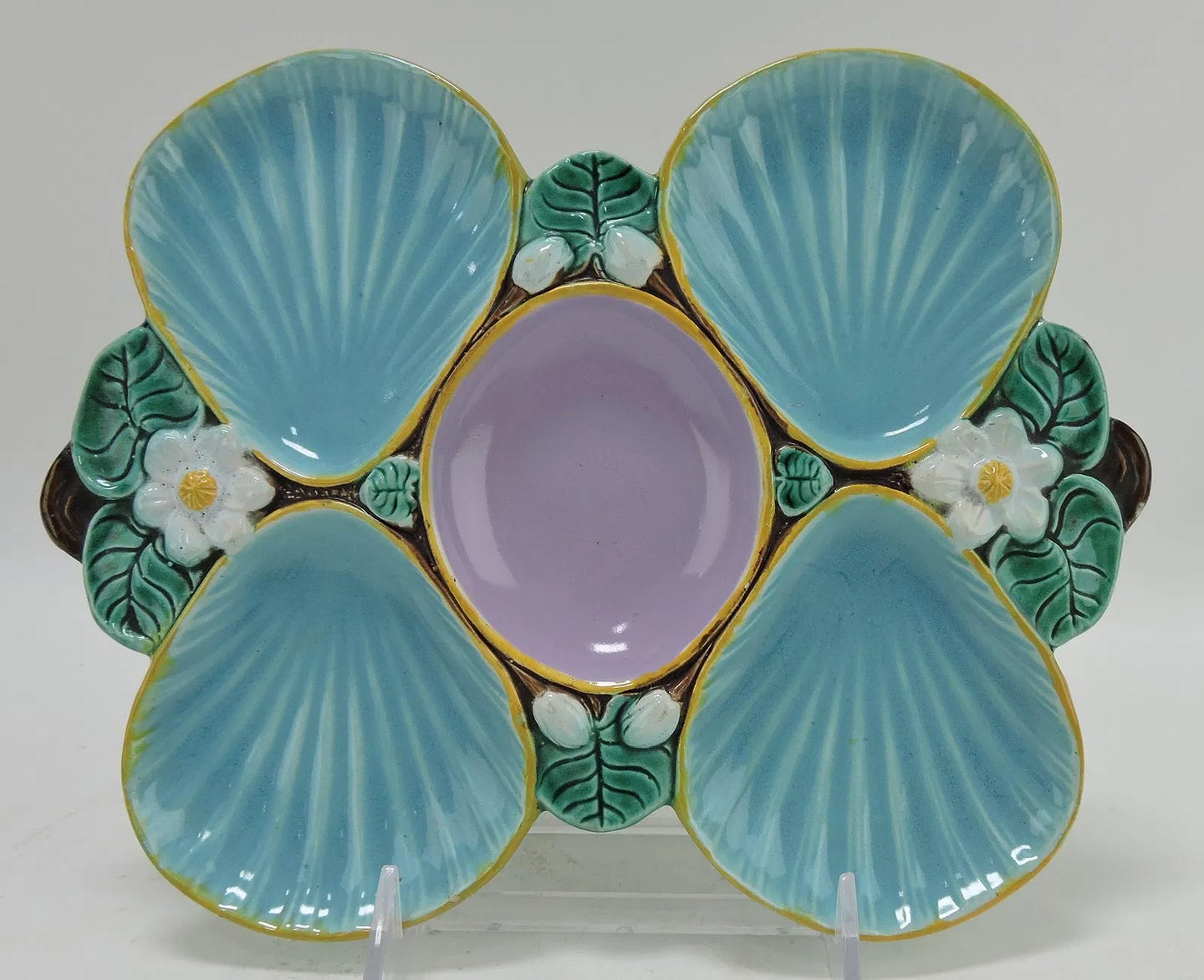
Auction Group by LiveAuctioneers.
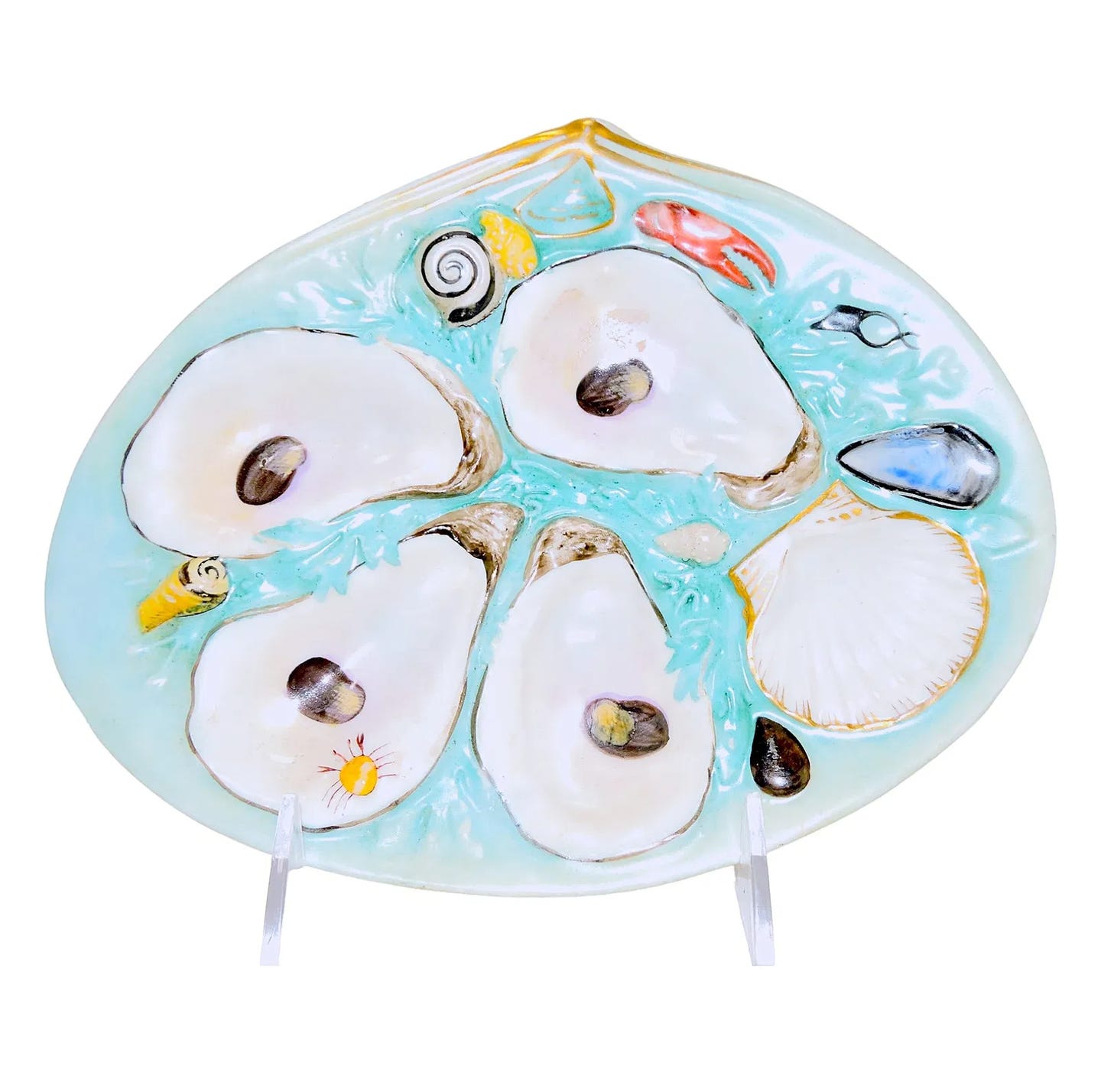
Collecting Oyster Plates
Collectors have a wide variety of antique oyster plates to choose from on the secondary market in an array of colors and designs, from soft pastel palettes to boldly colored majolica pieces; hand-painted motifs range from florals to sea-inspired scenes with things like seaweed, shells, and starfish.
Values are based on age, craftsmanship, manufacturer, shape, material, and the number of wells to hold oysters (generally, the more, the better). Condition, of course, is also important. Plates made for serving oysters on the half shell are the most prone to scratches, chips, cracks, or other damage, so the pieces made for shucked oysters are the most desired by collectors.
While many pretty plates can be found for $50 and under, collectors are willing to pay thousands for others, including high-quality hand-painted majolica and Limoges pieces, which are the most valuable and coveted, especially those with unique designs.
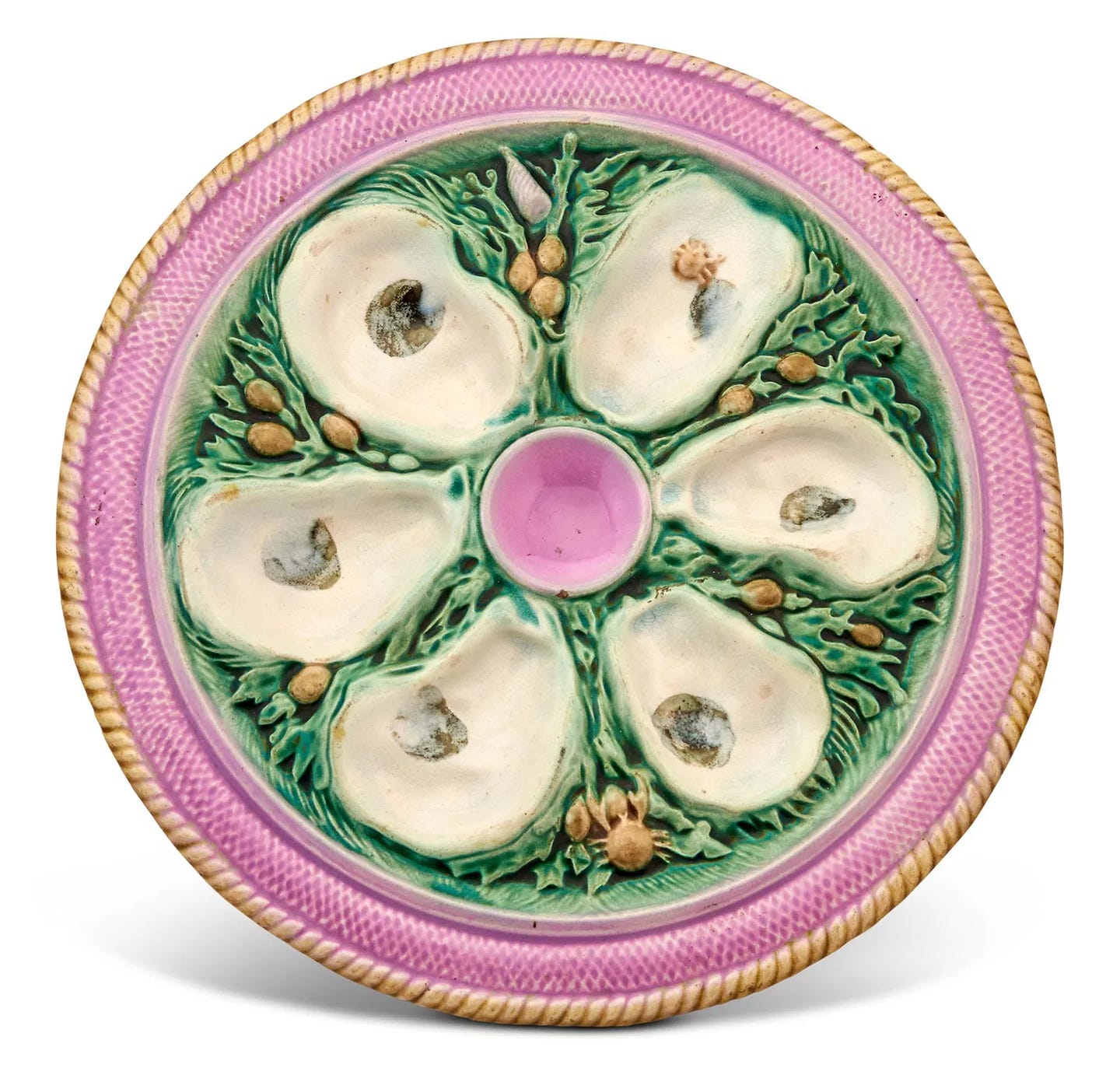
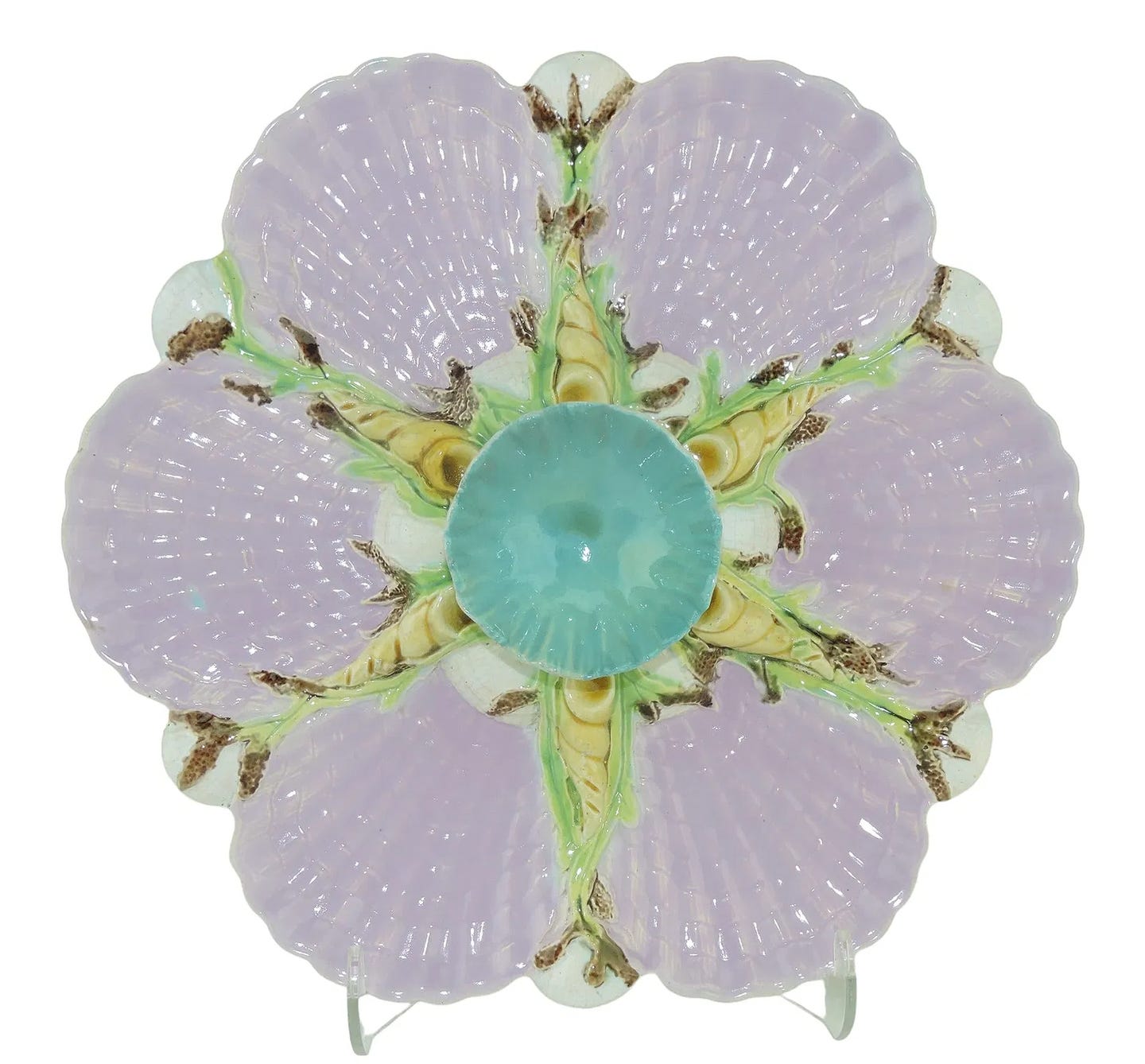
Though many collectors use oyster plates for their intended purpose, most treat them as decorative objects and showcase them in china cabinets, display them on plate stands on shelves or tables, or carefully hang them securely on a wall.
Oyster plates remain timeless keepsakes that captivate collectors and add a dash of nautical charm to any space.
You may also like:


